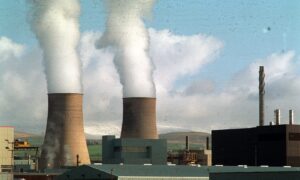The UK has set the goal of reaching Net Zero by 2050. To achieve this outcome, the country must tackle both supply and demand, while also overseeing far-reaching changes in how energy is delivered. Crucially, we must do all of this working within the constraints and opportunities associated with our existing energy system infrastructure.
Decarbonisation of industrial clusters will provide a significant step in cutting greenhouse gas emissions, but collaboration is essential – bringing together disparate groups, aiming for bold targets. New skills and standards will also have to be developed, which can then be leveraged in markets far beyond the UK.
Net Zero and engineering
Politicians, and society at large, tend to present Net Zero delivery in terms of making strategic choices between rival technologies – whether battery vs hydrogen fuel cell electric vehicles or hydrogen boilers vs heat pumps.
Individual engineers often do this too, but successfully engineering Net Zero will require measured Systems Thinking, Systems Engineering and a Whole Systems approach. This will involve identifying and managing risks, uncertainties and opportunities to make appropriate, evidence-based decisions as the suite of available solutions is refined and matured to meet the targets and objectives.
The engineering development and delivery method has been most formalised within the oil and gas sector’s Capital Value Process (CVP) due to the high value, complexity and novel nature of projects and programmes in the sector.
CVP is applied to ensure that projects are delivered to specification, safely and on time and budget. It involves progressively working through defined project lifecycle stages, with decision gateways inserted to review progress and decide whether to sanction progress.
Using this engineering approach to encompass the whole UK system would develop a truly holistic solution, which could be delivered on time, is technically feasible, and represents lowest overall cost to consumers but also maintains energy system resilience and security of supply.
Joining the dots
In South Wales, the race to Net Zero by 2050 means that industry is grappling with a plethora of global, national, devolved, regional and local expectations and targets.
The South Wales Industry Cluster (SWIC) is currently being progressed through two projects: the deployment project (led by Costain) and the cluster plan (led by CR+). It has attracted 35 partners and many other stakeholders from across the region. This project has the potential to decarbonise around 16 million tonnes of CO2 per year, or 70% of Wales’ total emissions.
Applying a CVP-based approach to the deployment programme includes progressing projects, which would facilitate the regional development of all three main decarbonisation solutions – electrification, fuel switching with hydrogen and emissions capture with CCS. Developing the future decarbonisation infrastructure requirements collectively will address the South Wales region’s specific requirements.
Through these projects and more, SWIC is addressing both supply and demand, while trying to future-proof against changes in how energy is delivered and work within the constraints and opportunities of the existing energy system infrastructure.
Individual to regional
Keeping the ultimate Net Zero goal in view, taking such a comprehensive and inclusive approach is most likely to deliver the required emissions reductions at lowest cost. Decarbonisation agnosticism requires working collaboratively with not just one emitter, but all the main emitters in conjunction with those likely to be responsible for both South Wales’ present and future energy system infrastructure.
There are big decisions ahead.
Transitioning end-use vectors such as heating and transport to be primarily based on electricity would require adding more system capacity including the building of more generating plant and transmission lines. Increased reliance on electricity, over gas, would require more capacity, while there are also challenges around ensuring resilience and security of supply in parallel with the increased intermittency of generating sources.
On the other hand, transitioning to a low carbon gas also has its challenges. For instance, developing a capacity to blend – and de-blend – hydrogen into natural gas.
The first step is create a project development environment, which allows consideration of all technically feasible solutions at the regional level, taking account of present UK’s infrastructure and its ability to facilitate or constrain potential decarbonisation solutions.
The ability to leverage existing infrastructure advantages, such as pipeline grids and gas import terminals, to deliver the goal of Net Zero should not be overlooked or under-estimated.
Most importantly, if the intention is to ultimately deliver Net Zero, then consideration of this requirement must be built in to the project concept development from the start, if design decisions are to balance immediate needs for specific project decarbonisation, with the broader regional opportunities and challenges.
The drive to Net Zero will require several new technologies. Some of these are becoming more familiar, such as solar and offshore wind, while others, such as hydrogen, are less mature.
Incorporating these strands into a new energy system will be a challenge. Such a demand will require new ways of thinking and solutions. Given these uncertainties, and first of a kind challenges, treating Net Zero as an engineering enterprise and applying a CVP type approach is vital. The engineering industry adage about failing to adequately plan being planning to fail is salient advice reflecting prior experience.
This is the first part in a series by Energy Voice and Costain, looking at system plans for decarbonisation. Watch out for Part 2, which will be following soon.
Recommended for you










